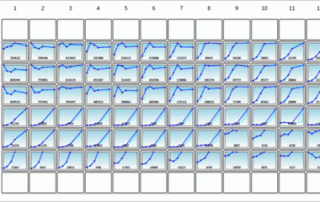Cellometer Vision tracks apoptosis in embryonic neural stem cells after propofol exposure
Introduction Propofol, a widely used general anesthetic, has been shown to produce neurotoxicity in neonatal animal experiments [1-5]. The possible detrimental effects of anesthetics, particularly in developing brains, require further study, as recent studies suggest that general anesthesia given to children younger than four years of age can increase the chances of learning disabilities later in life [6]. Here, researchers used embryonic neural stem cells to investigate the neurotoxic effects of propofol in vitro. Materials and Methods Cell culture and drug exposure Embryonic neural stem cells were collected from embryonic day 16 Sprague-Dawley rats. Resulting cells were cultured in 96-well [...]

